- Bernard Preston homepage
- Our green garden
- Little Garden Patches
Little garden patches
Little garden patches describes what you can do with just two or three square-metres.
Sometimes this column perhaps gives the impression you must have a huge garden to be a greenie. Not so, this three square-metre patch produces an incredible amount of food for our family. Add to that a few pots with parsley, sweet basil and thyme and you’ll have a kitchen blessed with fresh salads.
A few staked-peppadews and jalapeños in
the front garden where the vibrant colours will draw comment obviously would help.
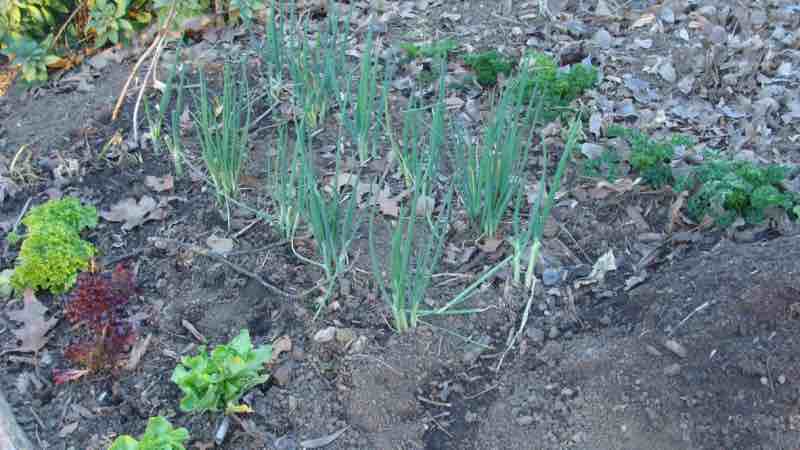
True you can’t grow potatoes, a field of mealies and butternut but they are easier to get from the green-grocer; and are less subject to the deteriorating influence of oxygen once reaped than your greens.
In one small patch you can supply the lunch-table every day with fresh lettuce, a few slips of spring onions and some rocket for a bit of variation; add to that young spinach leaves and a few twigs of celery or radish perhaps.
It’s not that difficult to get your mandatory seven to ten coloured foods every day; a proven 35% lower all-cause of death[2] is not unattractive, right? That means fewer consultations with your doctor and pharmacist; and less pain.
"What if a walk in a green environment could reshape brains, recalibrate sense of time and stave off mental health conditions? If the research trends are true, doctors might soon find themselves writing prescriptions of 20 minutes of nature per day."
- Dr William Bird, MD, MBE
You’ll often see recipes these days boasting that there is no lettuce; it is true that greens picked days previously are usually limp and very boring. Straight from the garden to the lunch table, with freshly-squeezed lemon juice and olive oil you have food fit for a king; feta cheese, half an egg or a scoop of homemade hummus[1] provide the protein.
A slice of low GI bread and natural honey would enchant the queen in her parlour too.
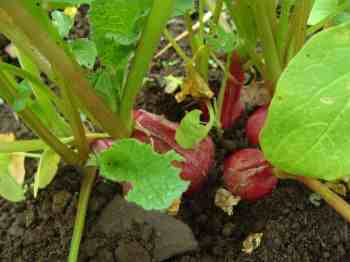
Fresh greens are loaded with minerals and phytonutrients. For example, the WHO declares that half a million children go blind every year because of a vitamin-A deficiency; their families don’t have little garden patches obviously.
Add to that the vitamin K and folate that are so
important for achieving high-grades in school, not to mention the
phytochemicals like lutein for the eyes; now you can imagine the
importance of greens for your growing family and granny too. Adult-onset macular degeneration is so needless.
There is one other not unimportant advantage in little patches. One can of bathwater every day would keep your little garden happy even in a
drought; actually two-halves so that you don’t find yourself suffering
from "bucket back."
Two or three small patches like this, being
continuously planted every few weeks would supply most of the needs of a
growing family for vegetables. Add some carrots and a fence for
climbing beans and you can at least halve your
fresh-produce bill; and probably quarter your pharmacy account too.
The
downside is that you will have to find the money to put the kids through
a tertiary-education. That is not just a wild opinion; it is all
scientifically proven. It's all about the folate[4] in your greens.
Little garden patches
Little garden patches will provide wonderful fresh parsley, spring onions and even a broad-bean bush; I am unashamedly a lettuce fan so there will be a few plants too.
Find a spot for one or two spinach plants; they are a wonderful source of iron, the most common serious mineral-deficiency in the Western world. Anemia is not fun; the chief cause of "tired all the time syndrome." Don't fuss about the oxalate.
Your little garden patches will only be as nutritious as the quality of your soil; get a few tips from easy composting.
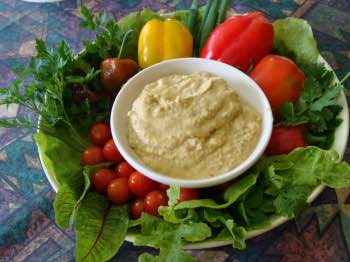
It may seem a little brash to say it but a lunch like this is standard at our green home. Often there would be some feta-cheese, an avocado or corn on the cob; and always a slice of our sourdough artisanal bread[3] and butter.
Homemade hummus is really so simple and quick.
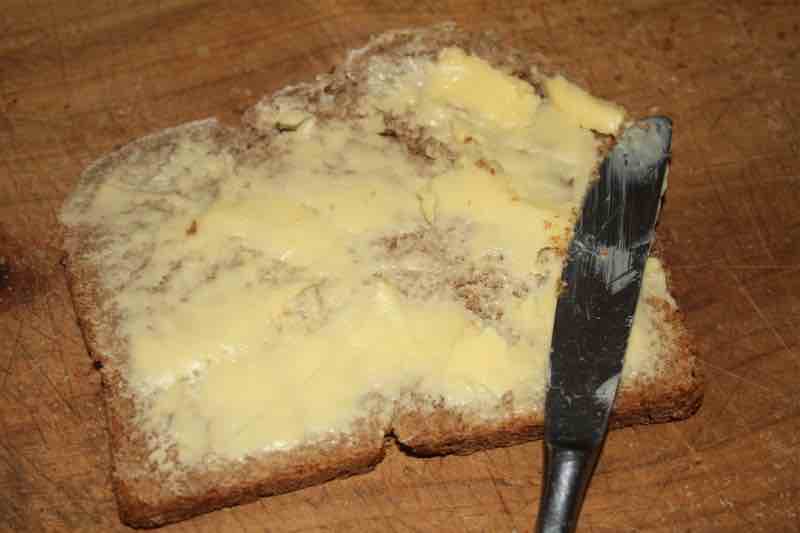
Those enjoying salads from your little garden patches like these need have no fear of butter; it's the refined carbs like sugar and cake flour that bring most of our troubles.
100% wholemeal bread like this contains an essential nutrient known as a lignan. Since millers started refining out the bran, breast tumours and cardiovascular diseases have soared.
What are lignans is a subject we should all have some inkling of.
Our motto is to embrace whole, unrefined foods; and grow as much of your fruit and veggies as you possibly can.
A beehive
Nine bean rows and honey-bee hive require something more than little garden patches. Where there's a will there is a way; greenies are laying cardboard down on their lawns, covering them with compost and growing an incredible amount of food.
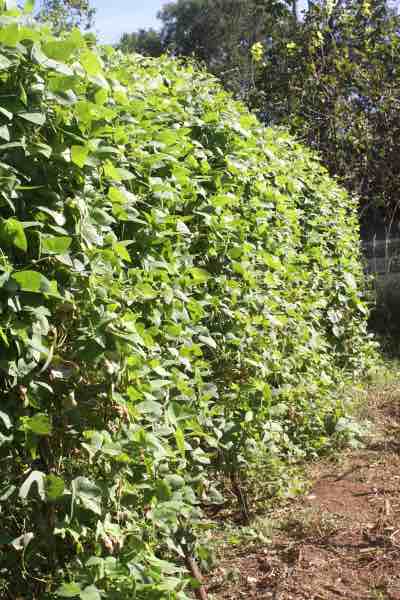 Nine lima bean rows
Nine lima bean rows"Nine bean-rows will I have there, a hive for the honey-bee and I shall have some peace there."
- William Yeats
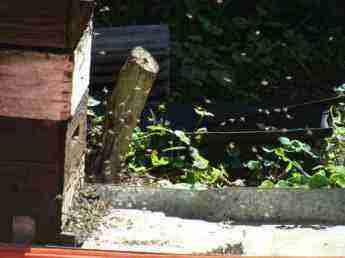
Your own natural honey will enable you to boot sugar once and for all into touch. Astonishingly completely unprocessed it has a low GI; it even lowers the fasting blood glucose of diabetics.
How do you prepare soil for a garden patch?
The food from little garden patches is only as good as the quality of the soil. You can pay good money for compost but how about killing two birds with one stone? A small inexpensive worm farm will turn all your kitchen waste into wonderful humus in two months; all you need is two buckets.
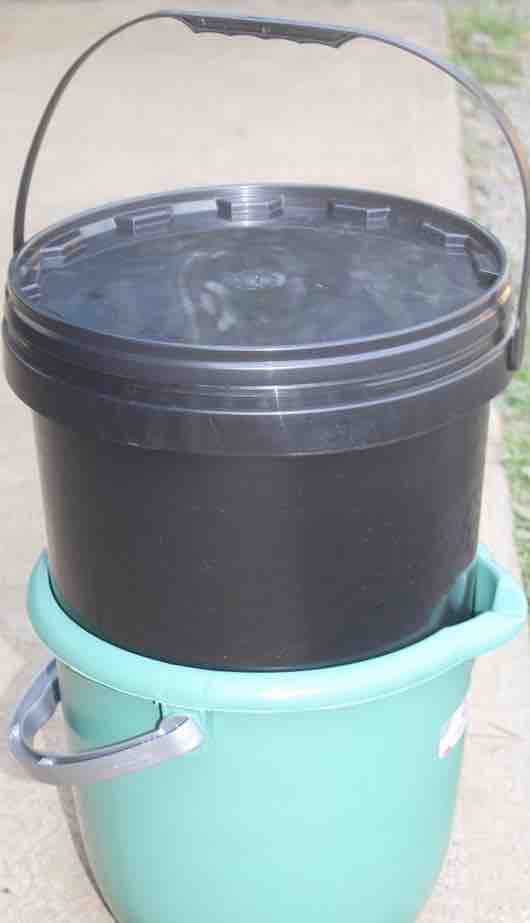
When browsing use right click and "Open Link in New Tab", or you may get a bad gateway signal.
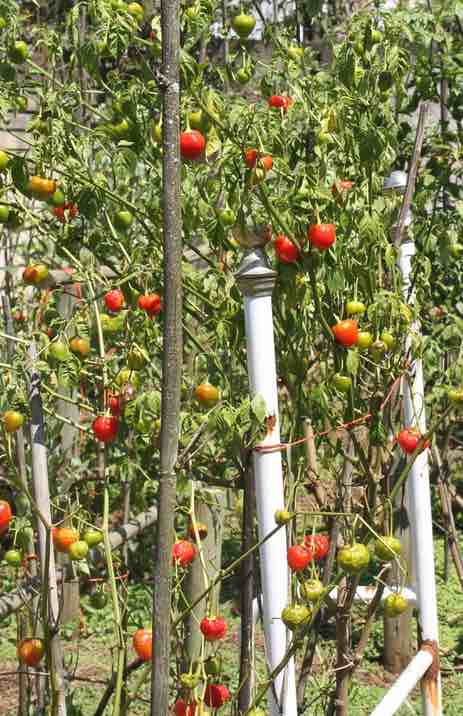
Newsletter
Our newsletter is entitled "create a cyan zone" at your home, preserving both yourself and Mother Earth for future generations; and the family too, of course. We promise not to spam you with daily emails promoting various products. You may get an occasional nudge to buy one of my books.
Here are the back issues.
- Lifestyle and ideal body weight
- What are ultra-processed foods?
- Investing in long-term health
- Diseases from plastic exposure
- Intensive lifestyle management for obesity has limited value
- A world largely devoid of Parkinson's Disease
- The impact of friendly bacteria in the tum on the prevention of cancer
- There's a hole in the bucket
- Everyone is talking about weight loss drugs
- Pull the sweet tooth
- If you suffer from heartburn plant a susu
- Refined maize meal and stunting
- Should agriculture and industry get priority for water and electricity?
- Nature is calling
- Mill your own flour
- Bake your own sourdough bread
- Microplastics from our water
- Alternative types of water storage
- Wear your clothes out
- Comfort foods
- Create a bee-friendly environment
- Go to bed slightly hungry
- Keep bees
- Blue zone folk are religious
- Reduce plastic waste
- Family is important
- What can go in compost?
- Grow broad beans for longevity
- Harvest and store sunshine
- Blue zone exercise
- Harvest and store your rainwater
- Create a cyan zone at your home
Did you find this page interesting? How about forwarding it to a friendly book or food junkie? Better still, a social media tick would help.
- Bernard Preston homepage
- Our green garden
- Little Garden Patches
Address:
56 Groenekloof Rd,
Hilton, KZN
South Africa
Website:
https://www.bernard-preston.com